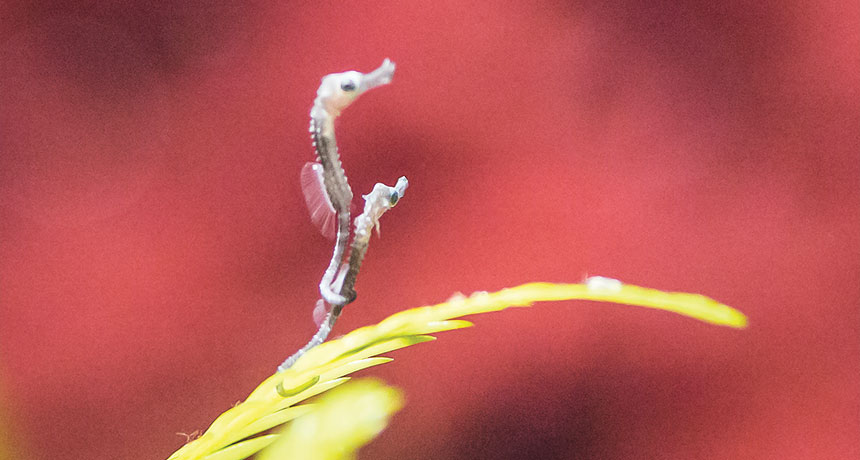Toddler seahorses are bumbling and adorable
Rice-grain-sized youngsters can’t yet get a grasp with their tails

GET A GRIP These juvenile seahorses can already grasp with their tails. Babies aren't so coordinated.
Zoo Basel
Rice-grain-sized youngsters can’t yet get a grasp with their tails

GET A GRIP These juvenile seahorses can already grasp with their tails. Babies aren't so coordinated.
Zoo Basel